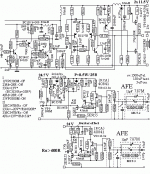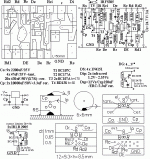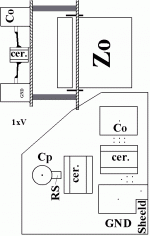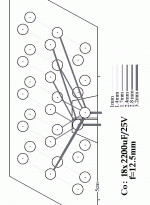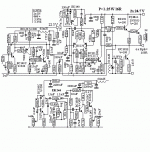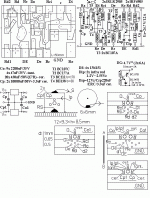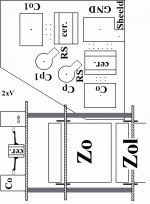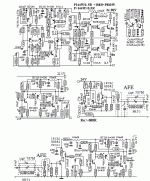Gateway to professional quality: headphone amplifiers.
Attachments
There is nothing "well" about unobtainable parts, obscure drawings or guitar effects
in headphone amplifiers.
We can only comment on what we see. The glory of 1970s audio engineering
does not travel by internet, so we must see how it differs from what we consider
the best possible for us in 2012. We don't rely on hard-wire assembly any more,
so there is little but schematic diagrams to compare.
To appreciate anything abstract, we must compare, so drafting schematics in
standard format or spice programs helps to do this for everyone.
in headphone amplifiers.
We can only comment on what we see. The glory of 1970s audio engineering
does not travel by internet, so we must see how it differs from what we consider
the best possible for us in 2012. We don't rely on hard-wire assembly any more,
so there is little but schematic diagrams to compare.
To appreciate anything abstract, we must compare, so drafting schematics in
standard format or spice programs helps to do this for everyone.
Who looks for and checks it knows what might be best.
Most people have not learned the power precise application, and appropriate measurements of transistors, for the normal projects.
this is a nonsensical generalization and I dont just mean your electronic translator. your schematics are indecipherable and full of parts that are not available to buy, how do you suppose this is good engineering?
we have headphone amps (in the headphone forum....) that defy the most modern instruments to measure them. maybe true not everything is in the measurements, but we can bet it beats the headphone amp from the 70's when i'm sorry, but the headphone amps were mostly terribly performing afterthoughts. Another thing is, we can bet that your yesteryear schematic was designed for yesteryear's headphones, which were VERY different.
appreciate the effort, but lets face it regurgitating old work without even making the effort to make it legible in today's context to todays engineers/builders/hobbiests; doesnt take that much work
Last edited:
Meaning big companies don't use factory production? Where is the production then?Only small businesses use audio stuff factory production.
Audio business never use ready-made things produced at the factory.
Therefore, all audio diagrams are not the best and only ridiculously easy to manufacture.
Only small businesses use audio stuff factory production.
I really have no idea what you are on about now
You are easily impressed by images such as an Avatar, adorn, Don't be fooled, even as few of us will be fooled by sentimental attachments to old audio technology.
I recognise many components and some topologies in those schematics from the early silicon era when dual-gate Mosfets were used everywhere they could be applied. They were a short-lived novelty outside RF application and just one feature of these schematics that have fallen into disuse, replaced by dependable, lower noise and distortion opamps, Jfets and, of course, DSP.
It may be interesting to look at these historically but "professional" would not be an apt description today or even 30 years ago, whatever our subjective preference in technology may be.
I recognise many components and some topologies in those schematics from the early silicon era when dual-gate Mosfets were used everywhere they could be applied. They were a short-lived novelty outside RF application and just one feature of these schematics that have fallen into disuse, replaced by dependable, lower noise and distortion opamps, Jfets and, of course, DSP.
It may be interesting to look at these historically but "professional" would not be an apt description today or even 30 years ago, whatever our subjective preference in technology may be.
- Status
- This old topic is closed. If you want to reopen this topic, contact a moderator using the "Report Post" button.
- Home
- Amplifiers
- Solid State
- Gateway to professional quality: headphone amplifiers
